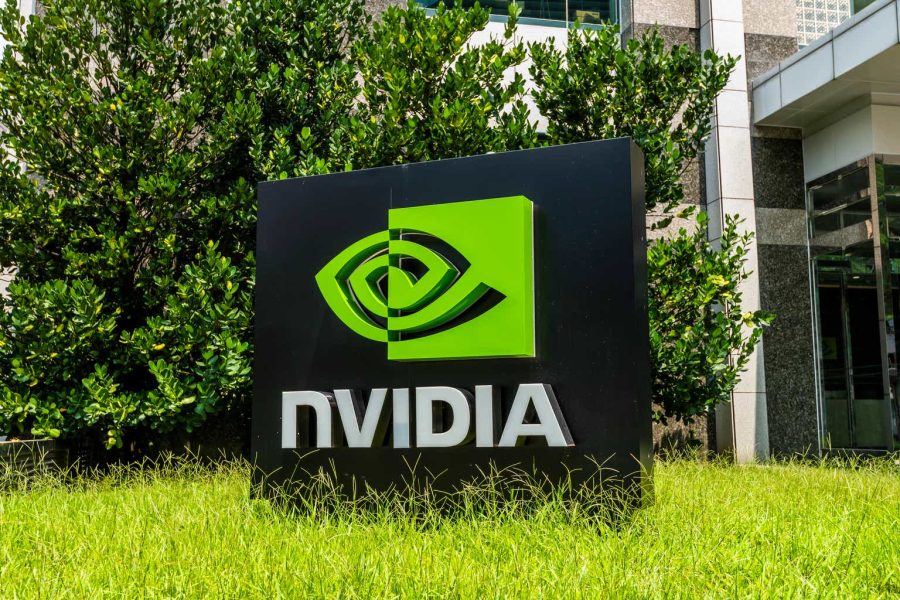July 14, 2024 This Week Top S&P 500 Gainers & Losers
Tesla: Time To Take Profits
Microsoft: The Q4 Results Should Surprise You
Tesla: Optimus And FSD Probably Won’t Save The Day
April 23, 2024 Maximizing Profits: When is the Right Time to Sell Your Business?
April 12, 2024 Improve Your Financial Status: A How-To Guide
April 12, 2024 How ZIM Integrated Container Tracking is Revolutionizing Global Trade
March 15, 2024 6 Best Growth Stocks To Buy Now According to Metatrader 5

NVIDIA (NVDA) Stock Forecast for 2024–2028. Sell or Buy?
Updated: July 26, 2024 (21:42)
Sector: SemiconductorsThe share price of NVIDIA Corp. (NVDA) now
50/200 Day Moving Average: $117.98 / $78.29
This figure corresponds to the Average Price over the previous 50/200 days. For NVIDIA stocks, the 50-day moving average is the resistance level today.
For NVIDIA stocks, the 200-day moving average is the support level today.
Are you interested in NVIDIA Corp. stocks and want to buy them, or are they already in your portfolio? If yes, then on this page you will find useful information about the dynamics of the NVIDIA stock price in 2024, 2025, 2026, 2027, 2028. How much will one NVIDIA share be worth in 2024 - 2028?
When should I take profit in NVIDIA stock? When should I record a loss on NVIDIA stock? What are analysts' forecasts for NVIDIA stock? What is the future of NVIDIA stock? We forecast NVIDIA stock performance using neural networks based on historical data on NVIDIA stocks. Also, when forecasting, technical analysis tools are used, world geopolitical and news factors are taken into account.
NVIDIA stock prediction results are shown below and presented in the form of graphs, tables and text information, divided into time intervals. (Next month, 2024, 2025, 2026, 2027 and 2028) The final quotes of the instrument at the close of the previous trading day are a signal to adjust the forecasts for NVIDIA shares. This happens once a day.
Historical and forecast chart of NVIDIA stock
The chart below shows the historical price of NVIDIA stock and a prediction chart for the next month. For convenience, prices are divided by color. Forecast prices include: Optimistic Forecast, Pessimistic Forecast, and Weighted Average Best Forecast. Detailed values for the NVIDIA stock price can be found in the table below.
Please note that the data is displayed considering the stock split ratio of 10.0 to 1 on 2024-06-10.
Because of this, to get a clear view of the forecast, you may need to adjust the graph's scale.
Long-term forecasts by years.

NVIDIA Stock Forecast: Intrinsic Overvaluation and Macroeconomic Trends at Play

Nvidia (NVDA) is a prominent player in the booming artificial intelligence (AI) market, currently holding an impressive 88% GPU market share. However, intrinsic overvaluation and macroeconomic trends are poised to significantly impact NVDA stock rates in the near future.
Key Factors Driving NVDA Stock Prices
Several factors will influence NVDA stock rates:
- Intrinsic Overvaluation: A discounted cash flow (DCF) analysis suggests Nvidia's current market cap of $3 trillion is unsustainable, with an intrinsic value closer to $1.4 trillion. This overvaluation implies a potential for substantial depreciation if the stock price reverts to fundamentals.
- Macroeconomic Trends: Federal Reserve monetary policies and interest rate shifts are crucial. For instance, a drop in the risk-free rate to 2% could reduce Nvidia's weighted average cost of capital (WACC) to 12%, potentially boosting valuations.
- AI Market Position: Nvidia's dominance in the AI sector fuels high growth expectations, but this optimism might be excessive, warranting a cautious outlook.
- Technological Advancements: Upcoming releases like the Blackwell chips bolster market perception. However, sustained R&D is critical for maintaining an edge over competitors like AMD and Intel.
- Market Sentiment and FOMO: Speculative enthusiasm and FOMO are inflating prices. If the sentiment shifts, it could lead to volatility and significant corrections.
Analysts can utilize these factors for accurate NVDA stock price predictions by closely monitoring macroeconomic policies, technological advancements, and intrinsic valuation metrics. By understanding these dynamics, investors can make well-informed decisions on whether NVDA is a good stock to buy or sell.
In conclusion, while Nvidia's leading position in the AI market and technological prowess are undeniable, the overvaluation and macroeconomic uncertainties suggest potential volatility ahead. Investors should tread cautiously, balancing speculative enthusiasm with grounded financial analysis to determine the best time to buy or sell NVIDIA stock.
Review the original Analysis

Nvidia's Future: AI Dominance and Stock Surge Potential

Nvidia (NVDA) is positioned to dominate the AI landscape, driving significant fluctuations in NVDA stock rates. Analysts predict that the company’s transition from a GPU designer to an AI factory builder will solidify its stronghold in the burgeoning AI industry. Key factors expected to influence NVDA’s stock price include advancements in AI, expansion in AI robotics, and substantial financial performance metrics.
Key Factors to Watch
Events such as the widespread application of Nvidia's AI and GPU technology in sectors like healthcare, government, and autonomous vehicles will play pivotal roles. Notably, Nvidia’s collaboration with automotive giants for autonomous vehicles and its innovative AI factory concept are on the radar of investors. These developments suggest new revenue streams and enhanced profitability, promising upswings in NVDA stock prices.
- AI Robotics: Nvidia’s investment in AI-powered platforms like Jetson and Omniverse provides significant growth potential.
- Cross-Sector AI Deployment: AI benefits in healthcare and government sectors will further boost Nvidia’s revenue.
- Financial Performance: Nvidia’s consistent high earnings growth will attract investor confidence.
- Competitor Landscape: The inability of rivals to match Nvidia’s technological prowess will sustain its market leadership.
Analysts can leverage these factors by closely monitoring Nvidia's quarterly financial reports and industry collaborations. Additionally, the increasing focus on digital twins represents another avenue for Nvidia's stock growth. Understanding these variables helps to make informed predictions about NVDA stock price trends. Investing in Nvidia now could be strategic given the company's strong economic moat and technological edge, leading to favorable NVDA stock price predictions and making Nvidia stock forecast discussions increasingly optimistic. For those considering whether NVDA stock is a buy or sell, these insights are crucial.
Review the original Analysis

Nvidia Stock Forecast: Key Factors That Could Drive Major Shifts

Nvidia (NVDA) stock has garnered significant attention with its impressive growth, but recent developments suggest potential volatility ahead. Analysts forecasting NVDA stock rates must consider several critical factors to make accurate predictions about the future performance of Nvidia's stock price.
Major Factors Influencing NVDA Stock Rates
One of the most pivotal aspects is the valuation insensitivity in passive fund flows. The influx of passive investments has inflated Nvidia's stock price, with little regard for fundamental valuation metrics. Should these funds begin to rebalance or correct, Nvidia’s stock could experience substantial downward pressure.
Geopolitical risks and potential regulatory changes are also notable. With significant revenues tied to China, U.S. semiconductor export restrictions pose substantial risks. Any adverse geopolitical developments could severely impact Nvidia's earnings and market presence, introducing significant uncertainty.
Nvidia’s valuation parallels historical bubbles, like Cisco in 2000. Such comparisons suggest a potential price collapse if market sentiment shifts. Momentum trading reversals add to this vulnerability, with recent declines in similar high-flying stocks indicating that momentum trades might be faltering. This can trigger rapid sell-offs and heightened volatility.
Additionally, overly optimistic growth expectations face risks from the law of large numbers. Forecasted deceleration in Nvidia's earnings and revenue growth can trigger a reevaluation of its stock, especially if it falls short of projections. With trailing P/E and price-to-sales ratios significantly elevated, a return to mean valuations could deflate stock prices.
- NVDA stock forecast
- NVDA stock price prediction
- Buy or sell NVIDIA stock
In summary, analysts must incorporate these factors to predict NVDA stock price movements accurately. By considering passive fund flows, geopolitical risks, historical valuations, momentum trading trends, fundamental metrics, and growth expectations, they can provide a well-rounded outlook for Nvidia stock.
Review the original Analysis
NVIDIA Corporation creates graphics processing units and chipsets for computers and mobile devices. The main products of the company are GPUs under the brands GeForce, nForce, Quadro, Tesla, ION and Tegra.
80% of graphics cards sold in Q2 2015 are from NVIDIA. In 2016, the company earned $5 billion, which is 7% more than in 2015.
The company was founded in 1993. The first PCI card, the NV1, was released in 1995. DirectX drivers for Microsoft users were introduced in 1996. In 2002, NVIDIA became America’s fastest growing company. NVIDIA is currently engaged in artificial intelligence and operates in four areas: games, cars, professional visualization, and equipment for data centers.
NVIDIA daily forecast for a month
| Date | Target | Pes. | Opt. | Vol., % |
|---|---|---|---|---|
| Jul 28 | 115.05 | 112.63 | 118.15 | 4.90 |
| Jul 29 | 115.16 | 112.86 | 117.93 | 4.49 |
| Jul 30 | 111.07 | 109.52 | 112.30 | 2.54 |
| Jul 31 | 109.96 | 105.68 | 111.83 | 5.83 |
| Aug 01 | 111.72 | 109.21 | 115.35 | 5.63 |
| Aug 02 | 109.82 | 106.58 | 113.23 | 6.23 |
| Aug 03 | 109.22 | 105.56 | 113.21 | 7.24 |
| Aug 04 | 107.31 | 104.57 | 110.69 | 5.85 |
| Aug 05 | 105.48 | 102.58 | 108.65 | 5.91 |
| Aug 06 | 101.42 | 99.75 | 105.23 | 5.49 |
| Aug 07 | 101.47 | 98.89 | 102.64 | 3.80 |
| Aug 08 | 104.32 | 100.82 | 108.07 | 7.19 |
| Aug 09 | 104.68 | 102.22 | 108.82 | 6.45 |
| Aug 10 | 108.92 | 106.36 | 111.32 | 4.66 |
| Aug 11 | 110.55 | 107.24 | 114.09 | 6.39 |
| Aug 12 | 111.49 | 107.09 | 113.67 | 6.14 |
| Aug 13 | 116.40 | 112.85 | 118.79 | 5.26 |
| Aug 14 | 117.39 | 112.93 | 121.56 | 7.64 |
| Aug 15 | 120.26 | 117.86 | 123.51 | 4.80 |
| Aug 16 | 119.12 | 115.97 | 120.31 | 3.75 |
| Aug 17 | 121.98 | 117.16 | 124.24 | 6.04 |
| Aug 18 | 116.00 | 112.81 | 117.34 | 4.01 |
| Aug 19 | 116.06 | 111.65 | 117.28 | 5.04 |
| Aug 20 | 119.49 | 118.29 | 124.21 | 5.00 |
| Aug 21 | 123.55 | 119.97 | 125.59 | 4.69 |
| Aug 22 | 125.77 | 121.81 | 128.04 | 5.11 |
| Aug 23 | 123.13 | 119.56 | 126.64 | 5.92 |
| Aug 24 | 117.10 | 114.23 | 119.15 | 4.31 |
| Aug 25 | 114.81 | 113.26 | 118.60 | 4.71 |
| Aug 26 | 116.94 | 113.72 | 118.93 | 4.58 |
NVIDIA Daily Price Targets
NVIDIA Stock Forecast 07-28-2024.
Forecast target price for 07-28-2024: $115.05.
Positive dynamics for NVIDIA shares will prevail with possible volatility of 4.674%.
Pessimistic target level: 112.63
Optimistic target level: 118.15
NVIDIA Stock Forecast 07-29-2024.
Forecast target price for 07-29-2024: $115.16.
Positive dynamics for NVIDIA shares will prevail with possible volatility of 4.298%.
Pessimistic target level: 112.86
Optimistic target level: 117.93
NVIDIA Stock Forecast 07-30-2024.
Forecast target price for 07-30-2024: $111.07.
Negative dynamics for NVIDIA shares will prevail with possible volatility of 2.473%.
Pessimistic target level: 109.52
Optimistic target level: 112.30
NVIDIA Stock Forecast 07-31-2024.
Forecast target price for 07-31-2024: $109.96.
Negative dynamics for NVIDIA shares will prevail with possible volatility of 5.506%.
Pessimistic target level: 105.68
Optimistic target level: 111.83
NVIDIA Stock Forecast 08-01-2024.
Forecast target price for 08-01-2024: $111.72.
Positive dynamics for NVIDIA shares will prevail with possible volatility of 5.327%.
Pessimistic target level: 109.21
Optimistic target level: 115.35
NVIDIA Stock Forecast 08-02-2024.
Forecast target price for 08-02-2024: $109.82.
Negative dynamics for NVIDIA shares will prevail with possible volatility of 5.868%.
Pessimistic target level: 106.58
Optimistic target level: 113.23
NVDA (NVDA) Monthly Stock Prediction for 2024
| Month | Target | Pes. | Opt. | Vol., % |
|---|---|---|---|---|
| Aug. | 114.11 | 103.16 | 121.10 | 14.81 |
| Sep. | 111.92 | 101.18 | 119.17 | 15.10 |
| Oct. | 113.53 | 106.99 | 123.75 | 13.54 |
| Nov. | 107.27 | 99.03 | 112.93 | 12.31 |
| Dec. | 97.23 | 88.71 | 103.76 | 14.51 |
NVIDIA forecast for this year
NVIDIA Stock Prediction for Aug 2024
An uptrend is forecast for this month with an optimal target price of $114.113. Pessimistic: $103.16. Optimistic: $121.10
NVIDIA Stock Prediction for Sep 2024
An downtrend is forecast for this month with an optimal target price of $111.922. Pessimistic: $101.18. Optimistic: $119.17
NVIDIA Stock Prediction for Oct 2024
An uptrend is forecast for this month with an optimal target price of $113.534. Pessimistic: $106.99. Optimistic: $123.75
NVIDIA Stock Prediction for Nov 2024
An downtrend is forecast for this month with an optimal target price of $107.267. Pessimistic: $99.03. Optimistic: $112.93
NVIDIA Stock Prediction for Dec 2024
An downtrend is forecast for this month with an optimal target price of $97.2264. Pessimistic: $88.71. Optimistic: $103.76
NVIDIA (NVDA) Monthly Stock Prediction for 2025
| Month | Target | Pes. | Opt. | Vol., % |
|---|---|---|---|---|
| Jan | 93.03 | 90.68 | 100.84 | 10.07 |
| Feb | 98.27 | 93.79 | 105.00 | 10.67 |
| Mar | 99.69 | 94.07 | 107.70 | 12.66 |
| Apr | 102.20 | 96.19 | 111.03 | 13.37 |
| May | 112.01 | 107.31 | 122.50 | 12.40 |
| Jun | 100.05 | 92.48 | 105.69 | 12.50 |
| Jul | 93.21 | 88.62 | 95.67 | 7.37 |
| Aug | 87.84 | 82.14 | 94.90 | 13.44 |
| Sep | 83.52 | 79.11 | 90.23 | 12.33 |
| Oct | 83.72 | 80.50 | 90.75 | 11.29 |
| Nov | 84.42 | 79.15 | 91.92 | 13.89 |
| Dec | 85.03 | 82.27 | 90.74 | 9.33 |
NVIDIA (NVDA) Monthly Stock Prediction for 2026
| Month | Target | Pes. | Opt. | Vol., % |
|---|---|---|---|---|
| Jan | 88.60 | 80.73 | 93.06 | 13.25 |
| Feb | 92.74 | 88.74 | 101.20 | 12.32 |
| Mar | 96.19 | 87.65 | 104.62 | 16.22 |
| Apr | 100.12 | 96.75 | 106.85 | 9.45 |
| May | 104.08 | 97.59 | 110.83 | 11.95 |
| Jun | 99.46 | 93.73 | 104.95 | 10.69 |
| Jul | 93.49 | 88.78 | 97.98 | 9.39 |
| Aug | 88.45 | 79.96 | 91.10 | 12.23 |
| Sep | 91.10 | 86.84 | 95.14 | 8.73 |
| Oct | 99.08 | 91.83 | 108.35 | 15.25 |
| Nov | 94.56 | 91.16 | 103.64 | 12.04 |
| Dec | 98.08 | 90.19 | 107.26 | 15.91 |
NVIDIA (NVDA) Monthly Stock Prediction for 2027
| Month | Target | Pes. | Opt. | Vol., % |
|---|---|---|---|---|
| Jan | 99.61 | 90.17 | 108.69 | 17.05 |
| Feb | 93.27 | 86.67 | 95.51 | 9.26 |
| Mar | 95.18 | 90.04 | 103.29 | 12.83 |
| Apr | 106.48 | 96.64 | 109.42 | 11.68 |
| May | 110.96 | 103.50 | 116.95 | 11.50 |
| Jun | 120.94 | 109.48 | 131.10 | 16.49 |
| Jul | 119.64 | 113.18 | 130.55 | 13.31 |
| Aug | 128.82 | 120.32 | 135.78 | 11.39 |
| Sep | 137.02 | 132.91 | 145.73 | 8.80 |
| Oct | 149.18 | 137.01 | 161.00 | 14.90 |
| Nov | 147.04 | 142.27 | 158.51 | 10.24 |
| Dec | 153.56 | 146.01 | 157.62 | 7.37 |
NVIDIA (NVDA) Monthly Stock Prediction for 2028
| Month | Target | Pes. | Opt. | Vol., % |
|---|---|---|---|---|
| Jan | 156.51 | 145.24 | 165.53 | 12.25 |
| Feb | 147.31 | 139.71 | 151.91 | 8.03 |
| Mar | 163.75 | 151.76 | 175.93 | 13.74 |
| Apr | 155.30 | 140.39 | 164.99 | 14.91 |
| May | 168.53 | 155.39 | 177.84 | 12.62 |
| Jun | 180.46 | 175.48 | 185.66 | 5.48 |
| Jul | 175.27 | 164.12 | 180.31 | 8.98 |
| Aug | 185.36 | 170.68 | 197.82 | 13.72 |
| Sep | 184.25 | 173.64 | 195.31 | 11.09 |
| Oct | 203.71 | 184.40 | 215.68 | 14.51 |
| Nov | 205.91 | 194.79 | 225.43 | 13.59 |
| Dec | 202.69 | 194.67 | 207.80 | 6.32 |
NVIDIA information and performance
2701 SAN TOMAS EXPRESSWAY, SANTA CLARA, CA, US
Market capitalization of the NVIDIA Corp. is the total market value of all issued shares of a company. It is calculated by the formula multiplying the number of NVDA shares in the company outstanding by the market price of one share.
EBITDA of NVIDIA is earnings before interest, income tax and depreciation of assets.
P/E ratio (price to earnings) - shows the ratio between the price of a share and the company's profit
Price/earnings to growth
Dividend Per Share is a financial indicator equal to the ratio of the company's net profit available for distribution to the annual average of ordinary shares.
Dividend yield is a ratio that shows how much a company pays in dividends each year at the stock price.
EPS shows how much of the net profit is accounted for by the common share.
Trailing P/E depends on what has already been done. It uses the current share price and divides it by the total earnings per share for the last 12 months.
Forward P/E uses projections of future earnings instead of final numbers.
Enterprise Value (EV) /Revenue
The EV / EBITDA ratio shows the ratio of the cost (EV) to its profit before tax, interest and amortization (EBITDA).
Number of issued ordinary shares
Number of freely tradable shares
Shares Short Prior Month - the number of shares in short positions in the last month.
NVIDIA (NVDA) stock dividend
NVIDIA last paid dividends on 06/11/2024. The next scheduled payment will be on 06/28/2024. The amount of dividends is $0.016 per share. If the date of the next dividend payment has not been updated, it means that the issuer has not yet announced the exact payment. As soon as information becomes available, we will immediately update the data. Bookmark our portal to stay updated.
Last Split Date: 01/01/1970
Splitting of shares is an increase in the number of securities of the issuing company circulating on the market due to a decrease in their value at constant capitalization.
For example, a 5: 1 ratio means that the value of one share will decrease 5 times, the total amount will increase 5 times. It is important to understand that this procedure does not change the capitalization of the company, as well as the total value of assets held in private hands.





































